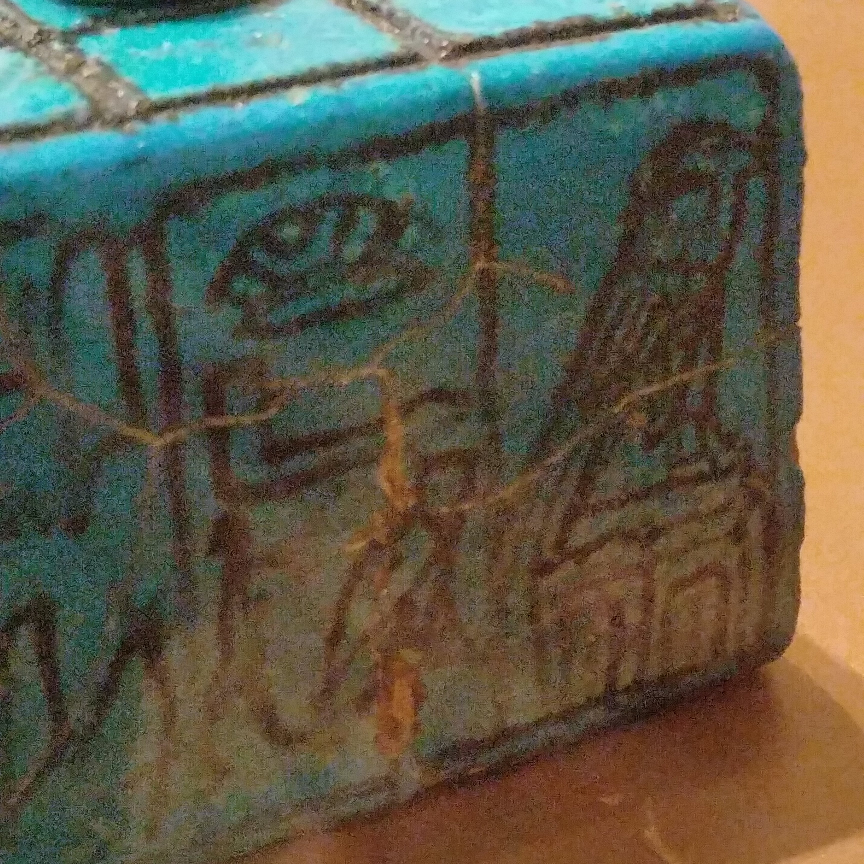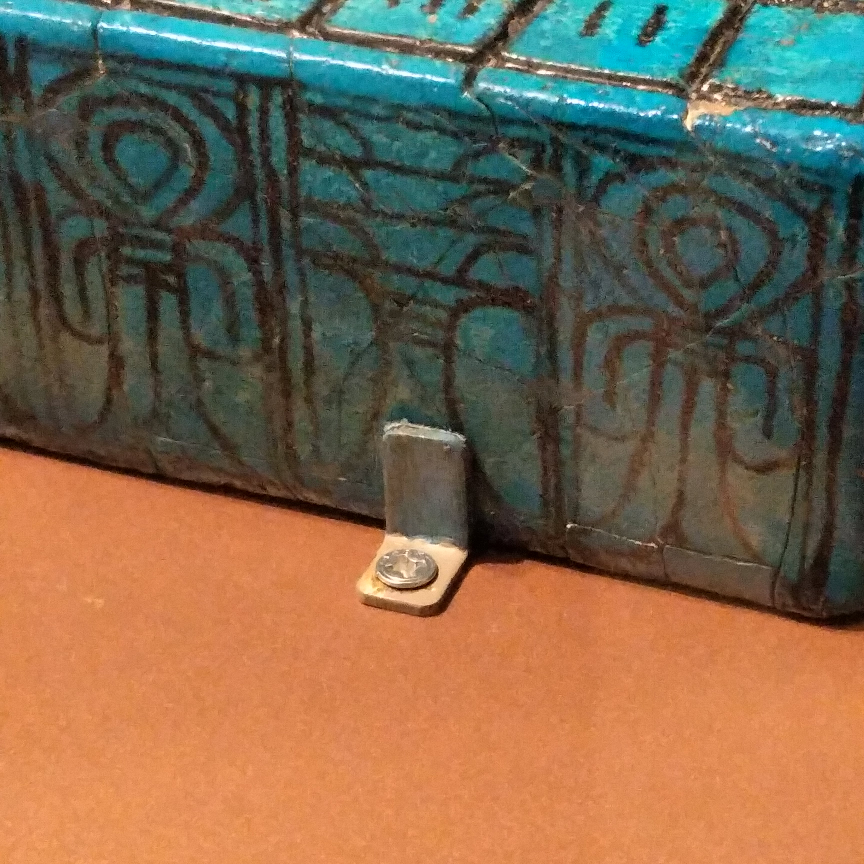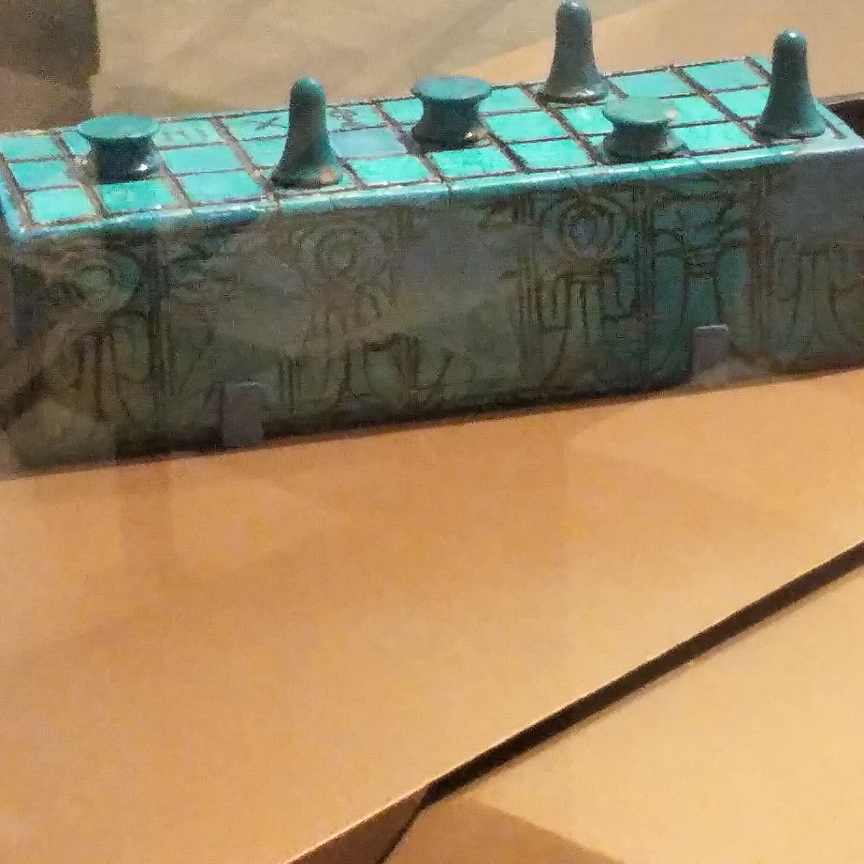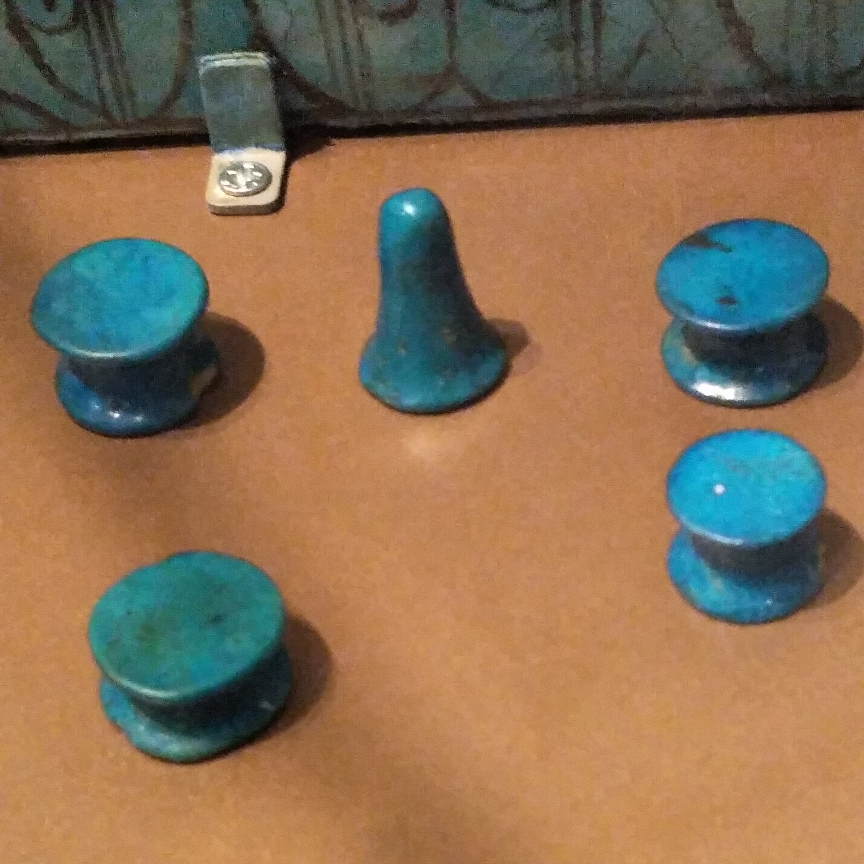

Gaming Board Inscribed for Amenhotep III with Separate Sliding Drawer, ca. 1390–1353 B.C.E. Faience, 2 3/16 x 3 1/16 x 8 1/4 in. (5.5 x 7.7 x 21 cm). Brooklyn Museum, Charles Edwin Wilbour Fund, 49.56a-b. Creative Commons-BY (Photo: Brooklyn Museum, 49.56a-b_view2_SL4.jpg)

Gaming Board Inscribed for Amenhotep III with Separate Sliding Drawer, ca. 1390–1353 B.C.E. Faience, 2 3/16 x 3 1/16 x 8 1/4 in. (5.5 x 7.7 x 21 cm). Brooklyn Museum, Charles Edwin Wilbour Fund, 49.56a-b. Creative Commons-BY (Photo: , 49.56a-b_49.57.1-.13_SL1.jpg)

Gaming Board Inscribed for Amenhotep III with Separate Sliding Drawer, ca. 1390–1353 B.C.E. Faience, 2 3/16 x 3 1/16 x 8 1/4 in. (5.5 x 7.7 x 21 cm). Brooklyn Museum, Charles Edwin Wilbour Fund, 49.56a-b. Creative Commons-BY (Photo: Brooklyn Museum, CUR.49.56a-b_detail.jpg)

Gaming Board Inscribed for Amenhotep III with Separate Sliding Drawer, ca. 1390–1353 B.C.E. Faience, 2 3/16 x 3 1/16 x 8 1/4 in. (5.5 x 7.7 x 21 cm). Brooklyn Museum, Charles Edwin Wilbour Fund, 49.56a-b. Creative Commons-BY (Photo: Brooklyn Museum, CUR.49.56a-b_49.57.1-.13.jpg)

Gaming Board Inscribed for Amenhotep III with Separate Sliding Drawer, ca. 1390–1353 B.C.E. Faience, 2 3/16 x 3 1/16 x 8 1/4 in. (5.5 x 7.7 x 21 cm). Brooklyn Museum, Charles Edwin Wilbour Fund, 49.56a-b. Creative Commons-BY (Photo: , CUR.49.56a-b_49.57.1-.13_tlf.jpg)

Gaming Board Inscribed for Amenhotep III with Separate Sliding Drawer, ca. 1390–1353 B.C.E. Faience, 2 3/16 x 3 1/16 x 8 1/4 in. (5.5 x 7.7 x 21 cm). Brooklyn Museum, Charles Edwin Wilbour Fund, 49.56a-b. Creative Commons-BY (Photo: , CUR.49.56_49.57.1-.13_NegD_bw.jpg)

Gaming Board Inscribed for Amenhotep III with Separate Sliding Drawer, ca. 1390–1353 B.C.E. Faience, 2 3/16 x 3 1/16 x 8 1/4 in. (5.5 x 7.7 x 21 cm). Brooklyn Museum, Charles Edwin Wilbour Fund, 49.56a-b. Creative Commons-BY (Photo: , CUR.49.56_49.57.1-.13_NegA_bw.jpg)
Gaming Board Inscribed for Amenhotep III with Separate Sliding Drawer
Egyptian, Classical, Ancient Near Eastern Art
On View: Egyptian Orientation Gallery, 3rd Floor


































































